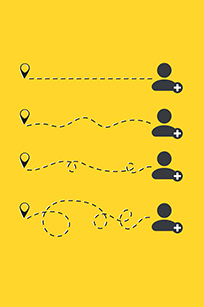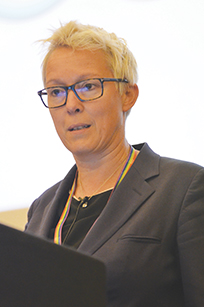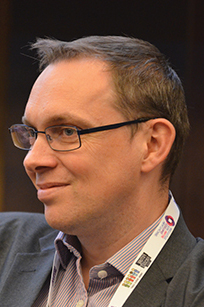Addressing variation: on the right pathway
 The Royal Free London NHS Foundation Trust is on a mission to eliminate unwarranted variation across all its sites and services. Its approach – driven by clinical practice groups – involves multidisciplinary collaboration and early results are encouraging. Steve Brown reports
The Royal Free London NHS Foundation Trust is on a mission to eliminate unwarranted variation across all its sites and services. Its approach – driven by clinical practice groups – involves multidisciplinary collaboration and early results are encouraging. Steve Brown reports
Addressing unwarranted variation in clinical practice – delivering best practice care more consistently and eliminating steps that add cost but no value – has become the rallying cry of health services across the globe.
The NHS long-term plan, the Carter report on productivity, and countless publications, from NHS RightCare and the Getting it right first time initiative, are full of references to the potential for improvement both within individual organisations and across the service.
However, identifying the existence of variation is one thing. Finding ways to understand where this variation is unwarranted, eliminating it and then maintaining consistent services has proved more elusive – particularly doing this at scale across multiple patient pathways.
The Royal Free London NHS Foundation Trust is arguably one of the providers that is most advanced with taking this agenda forward, aiming to deliver the same evidence-based pathways across all its sites and services.
The Royal Free was one of a number of providers to test out the idea of a group structure as part of NHS England’s acute care collaboration vanguard programme.
It formally started its group model in 2017 with local management teams in place at its three main hospitals – Barnet Hospital, Chase Farm and the Royal Free – all connected by a single group centre. And it is also working with other hospitals outside its own trust.
At the heart of its model are clinical practice groups (CPGs) – inspired by the approach used by the InterMountain Healthcare hospital system in Utah, US, which the trust first visited some four years ago.The CPGs cut across the vertical site-specific hospital management structure. Currently these CPGs are based on the trust’s divisional structure: surgery; medicine and urgent care; women and children’s; and transplant and specialist services. It is the CPGs’ job to address variation and define the standardised clinical pathways that should be followed on all sites.
 Trust group chief executive Caroline Clarke says it is a massive organisational change that will take time. ‘We have totally changed the way we run the organisation,’ she says. But it is a journey that I think we all need to go on.’
Trust group chief executive Caroline Clarke says it is a massive organisational change that will take time. ‘We have totally changed the way we run the organisation,’ she says. But it is a journey that I think we all need to go on.’
The trust’s work on standardisation began by identifying the 30 diagnoses in admitted patient care with the highest total costs. Working with the CPGs, it then identified some 20 pathways that covered treatments for most of these diagnoses as its starting point for standardising practices.
For each pathway, a multidisciplinary team was created including a patient representative and each team then went through a quality improvement process. This starts with understanding the context for each pathway – what clinical guidelines exist, for example – and mapping out each step in the pathway. The teams then gather up and analyse all the available outcome and cost data before agreeing an optimum pathway and the costs of the original and new pathways are calculated.
Once a pathway is agreed, it is digitised – loaded into the trust’s new Cerner electronic patient record. This means the pathway is in the system to support clinicians during treatment and standard tests can be ordered at the click of a button. (Non-standard steps can be undertaken or other tests ordered, but clinicians are required to explain why they are veering off the standard pathway.)
 Group chief finance officer Peter Ridley says the process is structured but time-consuming. ‘It varies how long it takes from a first meeting to having a revised pathway ready to implement,’ he says. ‘But it probably takes between six and 12 months depending on the complexity – some pathways are easier than others. It also depends on how many people need to be involved. The women and children CPG moved forward more quickly because there was a smaller subset of people involved.’
Group chief finance officer Peter Ridley says the process is structured but time-consuming. ‘It varies how long it takes from a first meeting to having a revised pathway ready to implement,’ he says. ‘But it probably takes between six and 12 months depending on the complexity – some pathways are easier than others. It also depends on how many people need to be involved. The women and children CPG moved forward more quickly because there was a smaller subset of people involved.’
The trust has now agreed new pathways for its first 20 pathways, and 2019/20 is its first year of full operation for these pathways. Patients will benefit from more consistent, evidenced-based care that is often also delivered in a more convenient way for them – with test and pre-operative assessments all done as part of the same visit, for example.
Savings target
But the trust believes the improved care will have a financial pay-off too. Based on the level of savings made by InterMountain and its own assessment, it has set a high-level savings target of 6% over three years for each pathway – 2% a year over three years.
The model focuses on costs directly managed by the clinical service lines, which would cover £550m of the trust’s £1.1bn total costs, not including tariff-excluded high-cost drugs and devices. The aim is to review pathways in four separate tranches over the three years to 2021/22, covering £330m of clinical delivery costs by March 2022 – which would mean £20m of savings over the three years if targets are achieved.
‘This year – the first full year – savings are running at £2.2m to £2.5m, but then it ramps up quite quickly,’ says Mr Ridley.
Early work on the gall bladder pathway, for example, identified potential savings of £500,000 – 10% of the total pathway cost – from a combination of quicker turnaround on tests, eliminating unnecessary repeat imaging and greater use of day surgery.
‘Part of the current task is making sure these are real savings,’ says Mr Ridley. ‘Have costs come out or have they been reinvested in doing something else?’ And if the new pathway has freed up capacity to help relieve a backlog or tackle waiting lists, can this be identified and a value put on it?
‘In elective hip and knee, we’ve taken out some direct outpatient costs around clinicians and the support that goes around them. And I can see the time that’s been put back into surgery and working through the backlog on orthopaedic waiting lists,’ he says.
He adds that there will be some stranded costs in outpatient clinics and the administration that goes with them.
But the trust is also considering the impact on income. For example, the women and children CPG has reviewed its pathway to keep mothers and babies together wherever possible.
‘Direct costs came out and stayed out and there has been a significant drop in the number of babies going into the special care baby unit (SCBU). We’ve seen real reductions in agency staffing costs. But we’ve lost more in income than we’ve saved,’ he says.
‘That’s not a reason not to do it, but it does mean that you need to look at the relationship with commissioners so that you are still incentivised to do this.’
The trust’s clinical commissioning groups have backed the improvement programme – with a representative embedded in the trust’s transformation team. Initially, the CCGs and trust tried to agree a new tariff on a case-by-case basis.
‘But this is almost impossible when you get more and more pathways,’ says Mr Ridley. ‘It can’t be full payment by results, so this year we have agreed a new contract form using a cap and collar approach.
‘The only variables are total referrals and A&E attendances – managed by the commissioners,’ he continues. ‘It is up to us to reduce the costs of the pathway from that point – so we manage conversion rates and the number of outpatient follow-ups. So if we can reduce the number of babies going to SCBU, we keep the benefit. And if the CCG can stop people coming to hospital in the first place, they keep the benefit.’
Moments of care
The costing team was involved in the process from the outset – with an understanding of current costs (and contribution towards overheads) and the financial impact of changes vital for planning and contract negotiations.
Mr Ridley says the costing approach was quite different, with each pathway broken down into ‘moments of care’ that all needed to have costs assigned.
While these costs draw on the same patient-level cost data set compiled by the trust, it uses the data in a different way. Recognising the importance of the costing work, the trust created three new roles in its costing team.
The trust’s group model extends beyond its own hospital sites. North Middlesex University Hospital NHS Trust has been working with the Royal Free as a clinical partner since 2017 and it was joined by West Hertfordshire Hospitals NHS Trust last year. North Middlesex in particular has been closely involved in the redesign work from the outset, with its clinicians leading on some of the pathways.
In general, partner organisations are adopting the new pathways that fit with their highest priorities. The aim is to have a consistent approach across all sites, although Mr Ridley says roll-out across future partner sites would need to recognise local factors.
‘The interesting part will be if we take on other clinical partners and we’ve already got an established pathway – you can’t just lift and shift a pathway,’ he says. ‘So the methodology for how you do any local changes will be important. You can’t just impose it.
‘The benefit of what we have done is that the clinicians have worked this up together and so they are going to comply with it. That’s different from being given a clinical guideline from somewhere else that they haven’t been involved in.’
The Royal Free has completed the redesign of its 20 pathways, covering about £75m of clinical delivery costs, and has a second tranche of pathways curently being worked up.
However, this is not a one-off review. Having redesigned the pathways, the CPGs will take a major role in monitoring compliance, ensuring the benefits are realised and making further changes where needed.
The stated goal is to deliver outstanding services, with Care Quality Commission ratings to match, and to demonstrate costs that are 10% below the average. Although the latest CQC rating saw the trust lose its overall ‘good’ rating, it says this was by a fine margin, with good ratings in three of the five domains. And its most recent reference cost index puts the trust at 4% below national average costs.
However, the trust sees itself on a journey and the real aim is to embed a cycle of continuous improvement.
Related content
We are excited to bring you a fun packed Eastern Branch Conference in 2025 over three days.
This event is for those that will benefit from an overview of costing in the NHS or those new to costing and will cover why we cost and the processes.